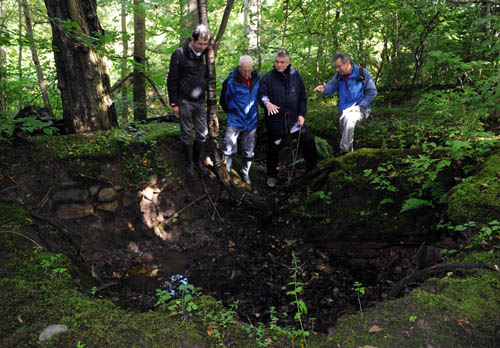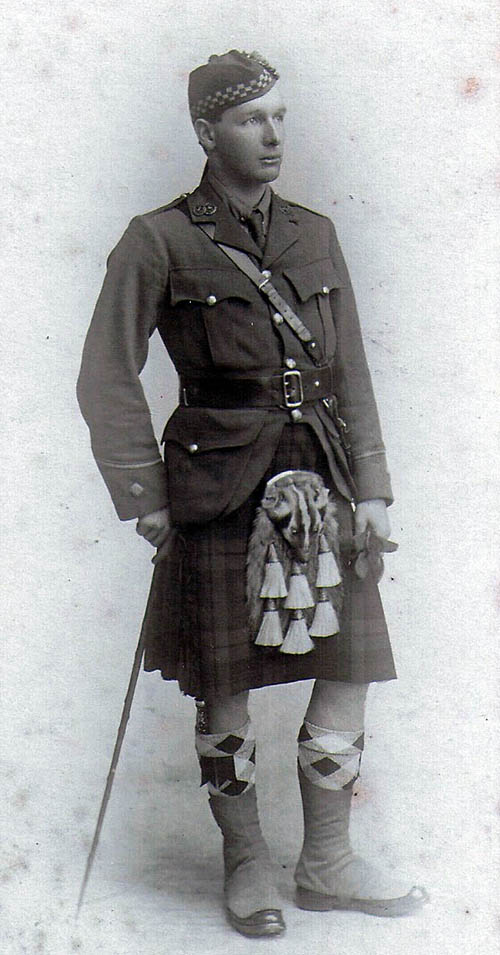ARCHAEOLOGISTS fighting to save trenches where young Scots trained for the horrors of the Great War began work on the historic site yesterday (fri).
The almost century-old trench network near Dreghorn barracks in Edinburgh will be examined by world-renowned archaeologists in order to uncover the full extent of the site.
Earlier this week, the city council and the MoD’s Defence Infrastructure Organisation (DIO) announced work was beginning on a plan to examine the training trenches.

The trenches were often the only experience Scots soldiers would have of trench warfare before being sent to the Western Front.
Next year will mark the centenary of the outbreak of the First World War.
The Glasgow University survey team were due to meet yesterday with Colonel Philip Bates, commander of the Army’s Edinburgh garrison, and councillor Richard Lewis as work began.
For Lynne Gladstone-Millar, a local historian who has been campaigning for the trenches for 10 years, the announcement is a huge victory.
Her father, William Ewart Gladstone-Millar, a young officer in the Argyll and Sutherland Highlanders, trained in the “Dreghorn sludge” before winning the Military Cross laster in the Great War.
He went on to be awarded the Military Cross after capturing an enemy machine gun nest at the Second Battle of the Marne.
Lynne remembers her father saying: “There was a very specialised kind of mud there. We called it “Dreghorn Sludge’.
“It caked on to your kilt so that the peats lacerated your chapped knees like knives.
“It always seemed to be raining , and day in day out, we had to plunge in and out of these trenches, getting soggier and soggier.
“And then there was the march back to Mortonhall [Edinburgh].
“It was not done to complain – among the officers anyway.”

The soldier was later shot in both legs after going over the top at the Battle of the Somme, and crawled his way back to his own lines.
Lynne said the network, which her father trained in before fighting in the Somme and other battlefields, would have been lost to the elements had it not been saved.
The site can now act as an educational tool for schoolchildren to learn about the First World War, as well as a memorial to the thousands of Scots who died in the conflict.
She said: “I’m extremely pleased, I have been working on this for ten years.
“I’m so glad they have accepted the trenches are important.”
The trenches would have been around six feet deep originally but have now begun to fill with silt and leaves.
The new scheme was a first step towards clearing them out altogether andusing them as an educational resource, Mrs Gladstone-Millar said.
She continued: “Schoolchildren can go and visit and see what it would have been like.
“It’s especially important to me because my father trained in the trenches.”
Announcing the new project earlier this week, Edinburgh’s culture convener Richard Lewis said:“The Council has a duty to preserve Edinburgh’s rich cultural heritage and I am delighted that we have identified funding to take this fantastic project forward.
“Of course, it is of special significance as we prepare to mark the centenary of the outbreak of the First World War.
“I look forward to seeing the results of the survey and working with DIO on the next steps.”
Glasgow University’s Centre for Battlefield archaeology will carry out work on the £3,500 project.
Centre Director Dr Tony Pollard said: “We have done a lot of work on trenches on the western Front in Belgium and France but this will be our first involvement with domestic practice trenches.
“For us this provides an exciting opportunity to gain a more rounded picture of the complex nature of trench warfare and the fact that this is a community project makes it all the more rewarding.”

